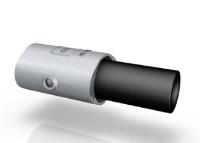 Add My Company
Add My Company
Sign In

Bladder Control Valves Reliability
Bladder control valves are the valve for the future. With its light weight construction, various reinforced rubber tube materials on offer, simple design, low cost maintenance, and flexibility to suit many applications, the bladder control valve is the way forward for a large range of industrial sectors.
A bladder control valve is proven to be the best type of shut off valve for abrasive and many other applications by far.
The term ‘fit and forget’ is often used by engineers who install a bladder control valve because of the extremely low maintenance and reliability of the product. The main reason to use them is that they will last far longer than ball valves and globe valves etc.
Bladder control valves come in a range of sizes from 10mm all the way up to 300mm which gives a huge range. They have no mechanical parts, and no actuator is required which reduces the cost a lot compared to other types such as butterfly valves. Also, bladder control valves can also be operated with a solenoid valve.
Bladder Control Valves vast end connections
Bladder control valves have a wide variety of materials of housing (body), flanges and socket ends of a bladder control valve such as aluminium, steel, stainless steel or plastic (POM) and a replaceable tube in different elastomer grades (including natural rubber, EPDM, silicon, etc), making them efficient to be used in a variety of different application areas.
Bladder Control Valve Installation & Maintenance
The installation of bladder control valves is very simple. They are also easy to remove from the line and maintain the valves when required. No matter which end connection on the valve is being installed, it is as simple as connecting the two end connections to the relevant connections within the pipe work.
It is recommended to use a sealant when installing a BSP bladder control valve or a flange seal when using a flanged bladder valve, this will ensure a 100% leak tight bladder control valve.
The bladder control valve hose is the only wearable part and occasionally this will require changing. The product must first be removed from the line, and then the end connections of the bladder control valve must then be carefully removed.
Once this is done the rubber hose can be removed from the bladder control valve. Use a tyre bead paste to act as a lubrication to the rubber bladder to ensure the bladder is removed easily. Apply more lubricant to the new rubber membrane being installed and insert the new membrane into the bladder control valve body. Use a lubricant again on the inside of the rubber hose and the external cones of the end connections, then place the end connections against the bladder valve and tighten the bolts until the end connections are flush.
Leave for 12 hours and then test the functionality of the bladder control valve to ensure it is working correctly. Install the bladder control valve back in the line and forget about it once again.
For more information on Efficient Bladder Control Valves – How to Install & Maintain talk to AKO UK Ltd
Enquire Now
List your company on FindTheNeedle.

